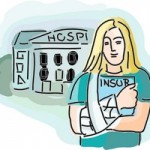
Whether you buy your health care insurance through your employer or independently, you need to review your coverage the same way cost-cutting entrepreneurs do. Buying coverage in the future won’t stop at finding the best price, what you pay increasingly will involve how well you personally manage your health. Don’t be surprised if your employer or insurer is going to get tougher about you losing weight or quitting smoking sometime in the near future.
Here are some tips to help you take the first step in controlling these costs:
Change your negative health care behavior: Lowering your weight will not only have immediate health benefits, it will also make your health insurance options and potential out-of-pocket costs more affordable over time. A Stanford University and Rand Corporation study reported that lifetime medical costs related to diabetes, heart disease, high cholesterol, hypertension and stroke among the obese are $10,000 higher than among the non-obese. It added that lifetime medical costs could be reduced by $2,200 to $5,300 following a 10 percent reduction in body weight.
Know what you’re buying: Whether you buy health insurance through an agent or your employer, insist that they explain exactly what you’re getting for your premium, and where deductibles do and don’t apply. That way, you’ll have a baseline when you buy your own coverage. If you’re purchasing your own insurance policy, compare the premium savings from a higher deductible plan with your usage pattern of health services. What you save can often cover your high deductible.
Research and discuss the potential cost of a diagnosis: If your physician diagnoses a condition that requires tests, prescription drugs, a hospital stay or ongoing therapy, ask polite but detailed questions about what you’ll be charged, from the doctor’s bills to ongoing ancillary costs associated with treatment. Ask the doctor or his office manager if discounts can be negotiated through cash payments or other means. You also need to be careful that you’re not being charged a rate for uninsured patients when you are simply going to paying for all or part of the bill to get to your deductible. Last, consider asking doctors for generic options and samples of prescription drugs to extend your savings.
Be smart about emergency and non-emergency visits: Emergency-room visits tend to cost $300 to $1,000 compared with $150 at an urgent-care center and $35 to $45 at a convenience-care clinic in a drug store or some other location. First, make sure the alternatives to hospital emergency room care are acceptable for your illness. Write yourself a note at some point to check out these options in your community so you understand what they offer, what their hours of business are, and under what conditions you’d choose them. In particular, make sure the facility and the provider are in your health plan’s network so whatever you pay out-of-pocket counts toward your deductible.
Use your company’s Health Care Flexible Spending Account: A Health Care Flexible Spending Account (HCFSA) is a separate, tax-advantaged account where you deposit funds to pay for medical expenses not paid by your insurance. You need to check what your particular company’s HCFSA allows you to stockpile funds for, and you will need to estimate carefully because you’ll have to spend out these funds by a particular annual date or forfeit the remainder.
Tags: Health, health care insurance, insurance advice












